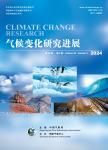新仙女木事件及全新世早中期降温事件——来自洱海湖泊沉积的记录
Younger Dryas Event and Cold Events in Early-Mid Holocene: Record from the sediment of Erhai Lake作者机构:Nanjing Institute of Geography and Limnology Chinese Academy of Sciences Nanjing 210008 China Changzhou Institue of Environmental Protection Changzhou 213022 Jiangsu China Nanjing Institute of Geography and Limnology Chinese Academy of Sciences Nanjing 210008 China
出 版 物:《气候变化研究进展》 (Climate Change Research)
年 卷 期:2007年第3卷第Z1期
页 面:41-44页
主 题:Younger Dryas Holocene cold event Erhai Lake
摘 要:Three cold events (the Younger Dryas, 9.4 ka cal BP, 5.8 ka cal BP) since the 13 ka cal BP in Erhai (EH) Lake catchment, Yunnan Province, were analyzed using the Total Organic Carbon (TOC) series of the EH core. By comparison of the EH core, Qinghai Lake core and Guliya ice core, differences of these cold events were determined. Erhai Lake s responses to the global cold events were lagged in time and weakened in intensity in comparison with Qinghai Lake s. The latitude location of Erhai Lake and the obstruction of Tibetan Plateau may in part explain the differences. However, the remarkable cold event of 8.2 ka cal BP in the Guliya ice core was absent in the records of Erhai Lake and Qinghai Lake. Power spectrum analysis of the TOC proxy series shows that there were three kinds of millennial cycles, i.e. 5 ka, 2.3 ka, and 1.5 ka, in climate changes in Erhai Lake, which reveal the responses of climate to suborbit cycles.



